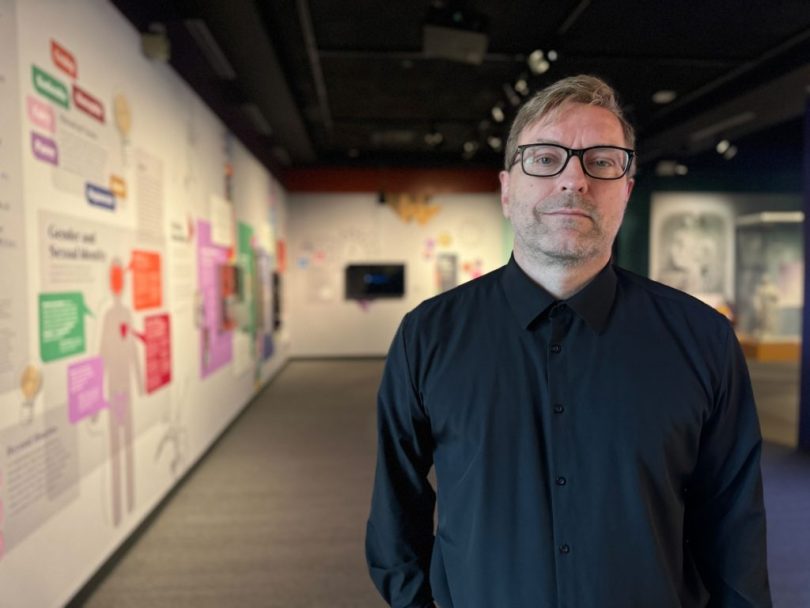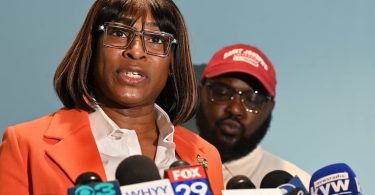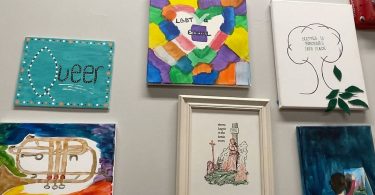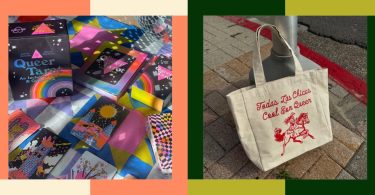ST. LOUIS — Thirty years ago, Rodney Wilson walked into his classroom at Mehlville High School, prepared to teach his students about the atrocities of the Holocaust.
He then did something he wasn’t expecting to do that day. He came out to his students.
“I simply mentioned there was a pink triangle,” Wilson said of the shape sewn into the uniforms of gay people held in Nazi Germany concentration camps that has since been reclaimed as a symbol of LGBTQ+ liberation.
During the lesson, Wilson said the pink triangle could have been used to mark him as a gay person: “I might have fallen underneath that umbrella of persecution.”
At that time, Wilson was already out to family and friends. Coming out to his students and coworkers was the last step in his coming out journey. Three decades later, he recalls what the world felt like back in 1994.
“There was so much going on outside of my classroom. We were having huge national debates about ‘Don’t Ask, Don’t Tell,’ about marriage equality, about HIV and AIDS,” he said.
Several trailblazing LGBTQ+ lives were also cut short that year. Pedro Zamora, an AIDS educator and activist who discussed his HIV-positive status on MTV’s “The Real World: San Francisco,” died at 22. Journalist and author Randy Shilts died at 42, leaving behind a pioneering body of work that chronicled the AIDS epidemic.
“But there was very little in the classroom. My textbook, for example, didn’t have anything about LGBTQ people or LGBTQ history,” Wilson said.
That lack of inclusion led him to found Lesbian and Gay History Month in 1994 in the United States. Now known as LGBTQ History Month, it’s celebrated every October, which is the same month as National Coming Out Day (Oct. 11) and the first National March on Washington for Lesbian and Gay Rights that was held in Washington, D.C., in 1979. Variations of the month is now celebrated in a few countries outside the U.S., from Cuba to Italy, with New Zealand being the most recent place to add it to its calendar.
PBS News spoke with Wilson about how the month has evolved over the years and why it’s vital to preserve LGBTQ+ history.
This interview has been condensed and edited for clarity.
Gabrielle Hays, PBS News: Take me to the day you came out to your students?
Rodney Wilson: I wasn’t sure that I would actually come out that day.
I think it’s really important that LGBTQ people are open about it, that we are out about it. That’s particularly important in our schools because children need to see LGBTQ people can be teachers because we had this whole era of prejudice against that idea.
So I had trepidation, but I also had anticipation that this was the right thing to do. This was a good thing to do. This would be beneficial to my students and be beneficial to my school and be beneficial to myself because there would no longer be a place where when I show up, I have to go in a closet. I have to pretend to be something I’m not, or at least not comment on certain areas of life because you don’t want to give away the secret. So I found it overwhelmingly liberating.
Some students were surprised. Perhaps some students had a suspicion. But overwhelmingly the student response was good because by that point it was near the end of the school year. I had a good rapport with most students. I think they trusted that I wanted what was best for them, that I was a person who did have integrity. And so this whole new bit of information they’re learning, I think they accepted it is coming from someone that they have learned to trust.
What was that period like for you when you came out?
Rodney Wilson was featured on the 1994 cover of the Riverfront Times, a former weekly newspaper in St. Louis. The cover is now on display at the “Gateway to Pride” exhibit at the Missouri History Museum. Photo by Gabrielle Hays/PBS News
You know, it was difficult. If you are straight, it is a privilege in that sense because everyone makes an assumption about you — and if you’re straight, that assumption is true. If you’re not, you’re in a difficult situation because you’re on the outside. You’re part of a group that’s an other type of group. But if you’re going to live a fully integrated life, if you’re going to be healthy, [if] you’re going to have the best life you can have, that part of who you are must be part of the conversation.
So in the early 1990s, we think of ways, “How do I come out?” We think about it, we have conversations about it, we discuss it with people. We want to hear other people’s coming out stories to see what might make our transition from being in a closet to being out of the closet more feasible, less painful, less hurtful to ourselves and others.
How did you come to found LGBTQ History Month?
In January 1994, I sent out a proposal to all the then-LGBTQ organizations suggesting that that October 1994 be recognized as what we then called “Lesbian and Gay History Month.” I was seeking their permission, their support for that idea. They began to endorse the idea. I organized a coordinating committee and that first October 1994, the first events for the first LGBTQ History Month happened in various places in the country, including here in St. Louis.
How has the month changed over the years?
The idea was always, I want this to exist the same way Black History Month in February exists, Women’s History Month in March exists. It’s just something in the atmosphere and in secondary schools, on college campuses, at universities and community institutions. People will remember October’s coming up. “We have a certain occasion in October. Let’s do something.” So I was hoping that it would grow organically on its own, which is what happened.
Your story is part of a Missouri exhibit preserving LGBTQ+ history. Thirty years later, what has been the impact of collecting all these stories?
A section of the Missouri History Museum’s “Gateway to Pride” exhibit describes the experience of coming out as a “revolutionary act” that could be a tool for social change. National Coming Out Day is celebrated every year on Oct. 11. Photo by Gabrielle Hays/PBS News
What’s really exciting about the “Gateway to Pride” exhibit is that many of these people are still living. They’re still here. They can stand and they can see what they did. They can see the wedding dress they were married in. They can see the tuxedo they were married in. They can see the flag that they had at Pride march. I can see that cover [of the] 1994 Riverfront Times. I can see the sign that was above my classroom door, Room 115, Mehlville High School.
So it’s an extraordinary process of rescuing from potential oblivion, these artifacts, giving them a place of honor and prestige and pride in the Missouri History Museum. This has been an extraordinary community effort going back almost a decade.
What do you want people to know about LGBTQ+ history? What do you want people to walk away with?
I want them to know that everyone is part of the historical narrative. We’re all in this story. And right now, we’re all on this planet together. We’re contemporaries. And we need to be doing everything we can to make the world, make our country, to make our communities, neighborhoods friendlier, warmer, more welcoming, more understanding. If you don’t understand something, no problem. Learn about it. Don’t just stay in your not understanding something. Move forward until you do understand it.







